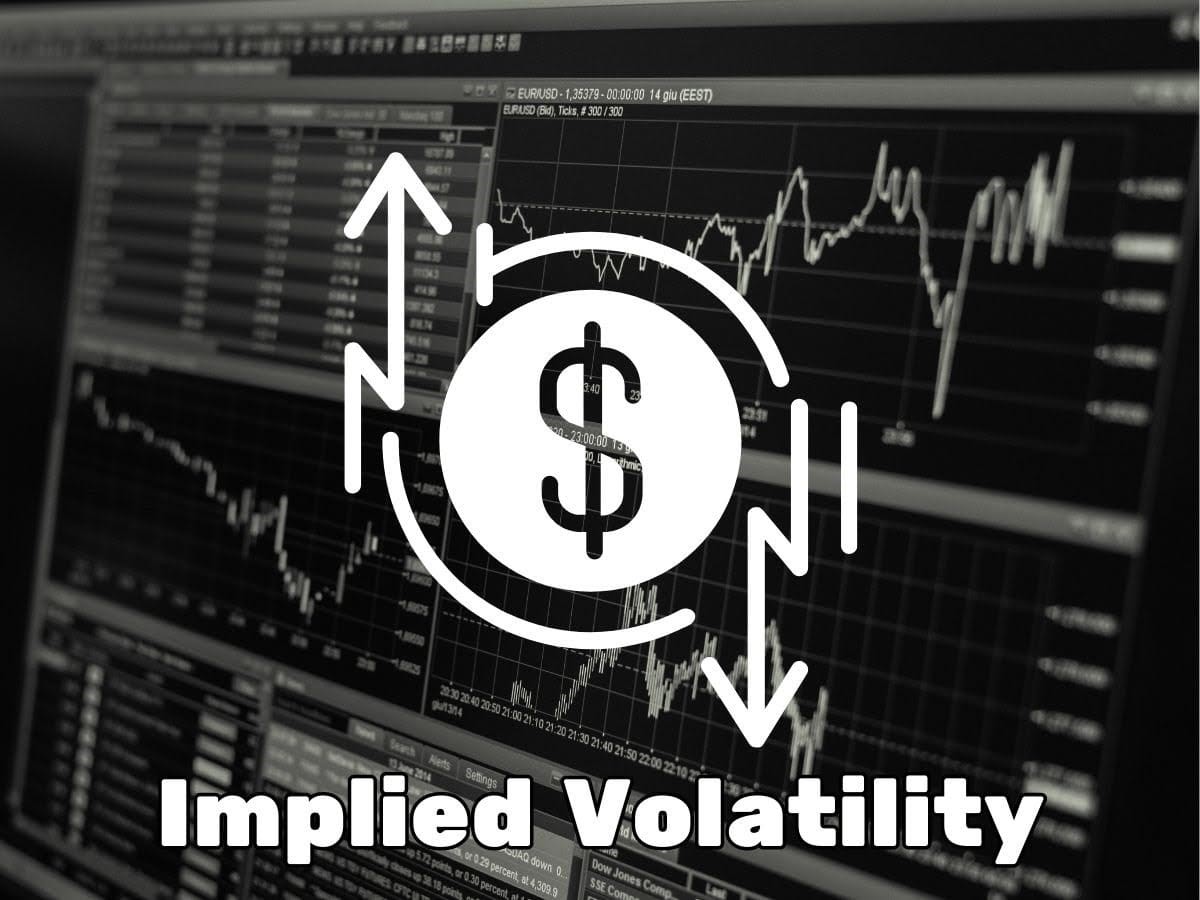Volatility measures how quickly security rises and falls. When security swings quickly up and down, volatility is considerable. In contrast, volatility is minimal when an asset swings slowly up or down. While implied volatility measures what the options markets expect to be over a particular period (until the option’s expiry), historical volatility is a record of how the underlying moves over a specified period.
How Does Implied Volatility Work?
The meaning of implied volatility (IV) is one of the most important ideas for options traders to understand for two reasons. It firstly shows how turbulent the market can get in the future. Second, implied volatility can be useful for calculating probabilities. This is a crucial element of options trading that helps determine the likelihood that a stock will reach a specific price by a particular date.
Implied volatility does not forecast the market’s direction, even though these characteristics might aid your trading selections. Even while implied volatility is seen to be a useful piece of knowledge, it is speculative because it is determined using an option pricing methodology.
Difference Between Implied Volatility And Historical Volatility
Here’s a comparison between implied volatility and historical volatility:
| Implied Volatility | Historical Volatility | |
|---|---|---|
| Definition | Implied volatility is an estimate of future volatility based on the market prices of options. | Historical volatility is a measure of past volatility based on actual price movements. |
| Calculation | Implied volatility is derived from the option’s price and other market factors using an options pricing model. | Historical volatility is calculated by measuring the standard deviation of the security’s price movements over a specific period, usually using daily price data. |
| Future Expectation | Implied volatility reflects the market’s expectation of future price volatility for the underlying security. | Historical volatility reflects the actual price volatility that has occurred in the past. |
| Market Factors | Implied volatility considers various market factors, such as supply and demand for options, investor sentiment, and expected news events. | Historical volatility is solely based on the historical price data and does not consider current market conditions or expectations. |
| Usefulness | Implied volatility is commonly used in options pricing and trading strategies to assess the relative value of options and potential market movements. | Historical volatility is useful for risk assessment, portfolio management, and comparing the current volatility level to historical norms. |
| Future Performance | Implied volatility does not guarantee how an investment will perform in the future, as it is based on market expectations that may or may not materialize. | Historical volatility provides insights into past price movements but cannot predict future performance. It is just one factor to consider alongside other fundamental and technical analysis. |
Implied volatility (IV) In Stocks
Implied volatility (IV) in stocks is interpreted as follows:
- Option premiums: IV influences the premium option buyers pay, as it is directly proportional to the market’s predicted volatility. In illiquid option transactions, counterparties negotiate implied volatility instead of price.
- Market sentiment gauge: IV serves as an indicator of overall market sentiment. Analysts closely follow the IVs of at-the-money (ATM) Nifty options, with strike prices closest to the spot price.
- Bearishness and IV: Pessimistic traders tend to buy put options as a hedge, which raises the IV of put options and indicates bearish sentiment. Conversely, IVs tend to decrease when traders are less concerned about market fluctuations.
- The comfort zone for traders: Traders typically feel comfortable with IVs ranging from 20% to 25%. Recently, IVs on ATM Nifty options have decreased to around 14% due to the absence of expected volatility-triggering events.
- High IV as a bearish signal: While IV levels theoretically do not indicate a market direction, traders often interpret high IVs as bearish. This is because the expectation of a downturn tends to have a greater impact on trading behavior than the expectation of an upturn. High IVs are commonly seen as a precautionary measure by investors and fund managers to protect against sharp market declines.
Benefits of Implied Volatility in Options
Implied volatility in options provides several benefits, including:
Efficient trading strategy determination: Implied volatility helps options traders assess the relative value of different options contracts. By comparing the implied volatility of various options, traders can identify opportunities for potentially profitable trades. Higher implied volatility generally indicates greater potential price swings and potential trading opportunities.
Measurement of uncertainty and market attitudes: Implied volatility serves as a gauge of market sentiment and uncertainty. When implied volatility is high, it suggests that investors expect significant price movements in the underlying security. Conversely, low implied volatility indicates the market anticipates relatively stable price action. Traders can use this information to assess risk levels and adjust their strategies accordingly.
Option pricing assistance: Implied volatility is critical in options pricing models like the Black-Scholes model. By factoring in implied volatility, these models estimate the fair value of options. Implied volatility reflects the market’s expectations of future price fluctuations, which is essential for accurately valuing options contracts.
Conclusion-
Implied volatility plays a crucial role in options trading by providing insights into future market expectations, assisting in trading strategy determination, and aiding in options pricing. It helps traders assess risk, identify trading opportunities, and make informed decisions. To enhance your options trading experience and gain access to valuable tools and expertise, consider partnering with a reliable options app like Share India.






